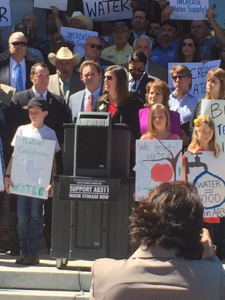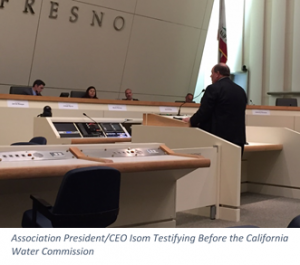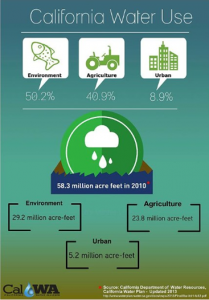On Friday, April 17th, the Regional Board held a board meeting in the Fresno office. The most concerning item on the agenda was enforcement of Waste Discharge Requirements. Three operations were cited to appear before the regional board; one dairy and two commercial farming operations.
The first farming operation (Farm A) called before the Regional Board farmed a little over 300 acres in Madera County. According to the report, the operation is required to comply with Water Code section 13264 which requires that irrigation users report their waste discharges to the Regional Board. The second farming operation (Farm B) that was cited on the docket was a commercial agriculture operation that was separated into multiple parcels across Stanislaus, Merced, and Madera counties. The accumulated acreage for the operation across the several counties totaled over 900 acres
The process that can ultimately lead to a meeting before the Regional Board begins with a Notice of Intent, which notifies operations of their lack of compliance. The notices are sent via certified mail, so when a notice is signed for, the time to respond begins. Once that deadline passes, the Regional Board then moves along with a Notice of Violation (NOV) which is another notice requiring compliance, and notifying the owner that serious fines are to be levied. The fines are listed as $1,000 per day for non-compliance. Both farms were notified in 2013 of their noncompliance.
The owner of Farm B failed to report his discharged acreage to the coalition which kept the time on the fine running. In all, the owner was out of compliance for 204 days resulting in a penalty of over $200,000 dollars. The Regional Board issued an Administrative Civil Liability Complaint with a reduced amount for $31,460 dollars. Farm A was cited for non-compliance for not enrolling in a watershed coalition or reporting to the Regional Board and assessed a fine of $51,480 dollars.
As stated above, both farms were notified 2 years ago and encouraged to report discharges to the Regional Board or enroll in a watershed coalition. The timeline for unpunished enrollment has long passed, and penalties like these will become more common. If you have not enrolled in a coalition, or reported your discharge to the Regional Board, we encourage you to do so. If you have received a notice of intent or violation, we encourage you to respond to the Regional Board with your plan of action. The fines that are being imposed are very high, and we fear that the longer an operation waits, the levied fines will be much heavier.



